Introduction
Overlanding has exploded in popularity across the United States in recent years, but few routes offer the same combination of natural beauty, seclusion, and backcountry adventure as the Allegheny Discovery Route (ADR). Spanning from the rolling valleys of western Virginia into the mountainous wilds of eastern West Virginia, the ADR offers hundreds of miles of back roads, forest service trails, rugged gravel connectors, and small-town charm.
Whether you’re a seasoned overlander looking for your next challenge or a newcomer hoping to test out your rig on varied terrain, the Allegheny Discovery Route presents an ideal journey. This article provides a complete guide for planning and overlanding the ADR — from vehicle setup and gear checklists to camping tips, must-see stops, and trail strategy.
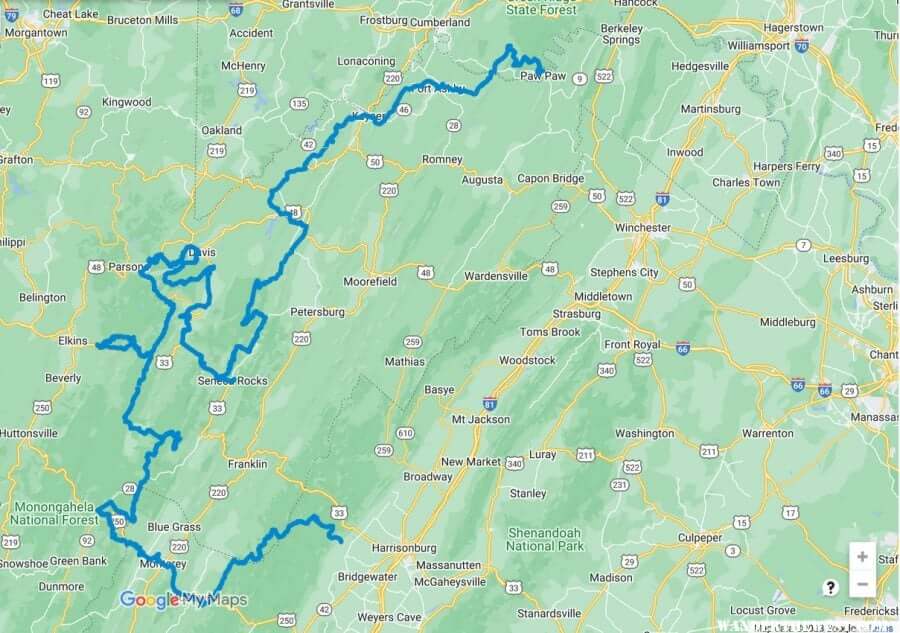
What Is the Allegheny Discovery Route?
The Allegheny Discovery Route (ADR) is a curated overland route that loosely follows the Allegheny Mountains, forming part of the larger Appalachian chain. Unlike fast-paced interstate highways, the ADR is all about the journey, not the destination.
- Route length: Approx. 350–500 miles, depending on the variation
- Route type: Mixed-surface route (pavement, gravel, dirt, forest service roads)
- Difficulty: Easy to moderate (but weather-dependent)
- Best for: Stock 4WDs, adventure bikes, small overland campers
- Ideal seasons: Spring through fall (late October brings snow risks)
The route begins near Harrisonburg, Virginia, traveling west through George Washington National Forest, and continues into the rugged Monongahela National Forest in West Virginia, skirting towns like Franklin, Durbin, Cass, Green Bank, and potentially ending around Elkins, WV.
This trail isn’t an official government-marked byway, but rather a composite route shared by seasoned overlanders and trail organizations. It mixes GPS tracks from the Blue Ridge Overland Gear community, VA Off-Road enthusiasts, and local forest service maps to create a rewarding journey.
Terrain and Trail Conditions
One of the ADR’s defining features is its varied terrain. Overlanders will encounter:
- Hard-packed gravel forest roads with occasional potholes
- Mildly rocky sections that may require cautious driving
- Shaded canopy corridors that twist through dense hardwoods
- Ridge-line drives with panoramic mountain views
- Creek crossings, especially during spring thaw or summer storms
Most of the route is passable by stock 4WD SUVs or trucks with decent ground clearance. However, sections after heavy rains or snowmelt can introduce muddy ruts, slick climbs, or temporary washouts. Always check weather conditions and avoid trail abuse if the land is saturated.
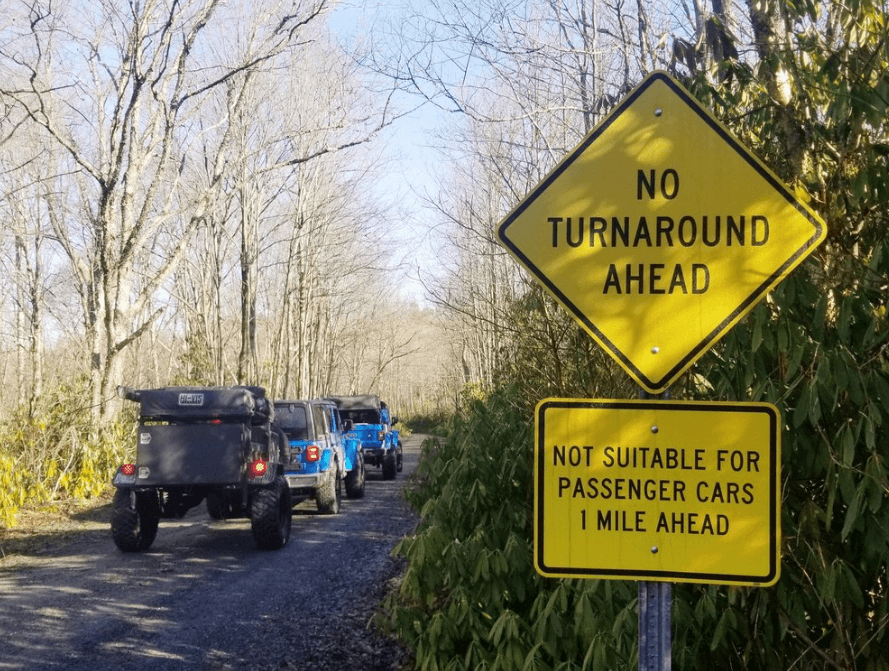
Recommended Vehicles
While the ADR is not a rock-crawling gauntlet like the Rubicon Trail or Moab, it still demands mechanical reliability and moderate off-road capability. Here’s what works best:
✅ Ideal Vehicles
- Jeep Wrangler (any trim)
- Toyota 4Runner TRD or Trail Editions
- Ford Bronco (Base and up)
- Subaru Outback Wilderness (for dry-season travel only)
- Toyota Tacoma (with off-road package)
- Chevy Colorado ZR2
- Ram 1500 Rebel or TRX (smaller sections only; clearance/width issues)
- Dual sport or ADV motorcycles (BMW GS, Honda Africa Twin)
❌ Not Recommended
- Low-clearance 2WD vehicles
- Full-size RVs or long trailers
- AWD-only crossovers during wet seasons
Overlanders pulling small off-road campers (like a Turtleback, Opus, or off-grid teardrop) can manage most sections if they have a capable tow rig and awareness of turning radius and slope.
Gear Checklist for the ADR
Every overland trip should start with a thorough gear and safety checklist, especially when tackling multi-day routes through national forests and mountains.
🔧 Recovery & Trail Gear
- Full-size spare tire and patch kit
- Recovery straps and shackles
- Tire deflator and air compressor
- Jack stand and traction boards
- Basic tool kit and fluids
- Maps and offline GPS (Gaia GPS, OnX Offroad)
🏕️ Camping Essentials
- Rooftop tent or ground tent with rainfly
- Sleeping bags rated to 30°F or lower
- Jetboil or compact cook setup
- Refillable water containers (5–7 gallons per person for multiday trips)
- Cooler or 12V fridge
- Bear-safe food storage if stopping in black bear zones
📡 Communication & Navigation
- Garmin InReach or Zoleo for satellite SOS
- Ham radio or GMRS for convoys
- Offline maps with GPX routing
- Portable solar charger or dual-battery setup
🧭 Optional Luxuries
- Awning and camp chairs
- Firepit ring (check burn bans!)
- Solar shower
- Star tracker or telescope for Green Bank’s dark skies
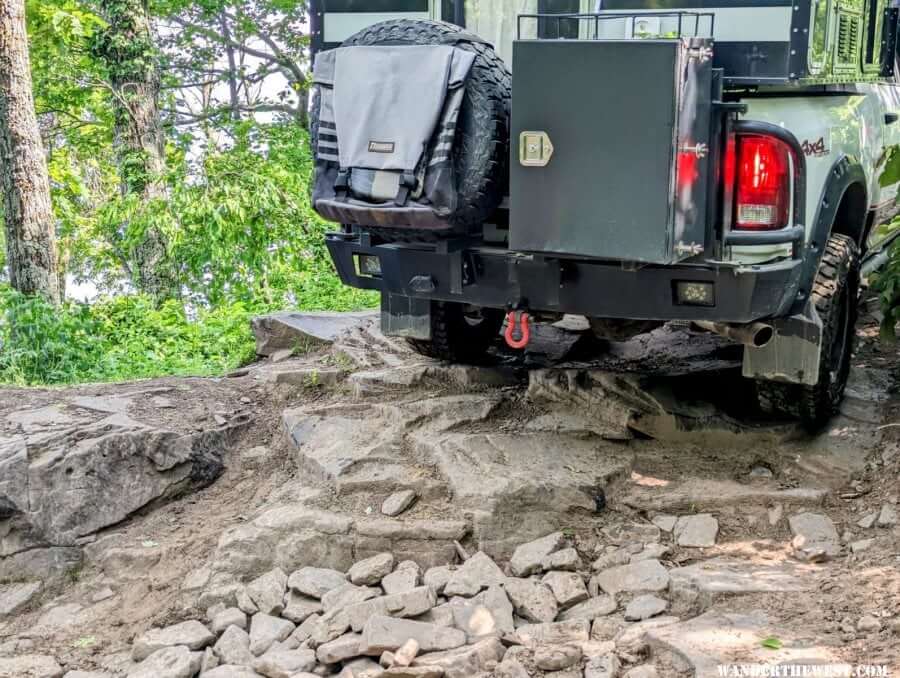
Notable Stops and Highlights
The Allegheny Discovery Route is more than a dirt road through the woods — it’s dotted with history, small towns, and scenic wonders. Here are some can’t-miss highlights:
🔹 Reddish Knob (VA)
- At 4,397 feet, it’s one of Virginia’s highest drivable peaks
- Panoramic 360-degree views — best for sunrise or sunset
- Ideal camp spot nearby at Flagpole Knob
🔹 Braley Pond
- Just off the western edge of George Washington National Forest
- Serene lake and quiet primitive camping area
- Excellent for fishing and a peaceful overnight stay
🔹 Seneca Rocks (WV)
- Iconic rock formation with hiking trails and climbing routes
- Stop at the Seneca Rocks Discovery Center
- Grab lunch in nearby Franklin or enjoy riverside dispersed camping
🔹 Spruce Knob
- The highest point in West Virginia at 4,863 feet
- Features an observation tower and hiking trails
- Camp at nearby Spruce Knob Lake Campground
🔹 Green Bank Observatory
- Located in the National Radio Quiet Zone — no cell service!
- Tour the world’s largest steerable radio telescope
- Wild camping options nearby under some of the East Coast’s darkest skies
🔹 Cass Scenic Railroad
- Historic logging town turned into a railroad heritage site
- Ride an old Shay locomotive up the mountains
- Great for families or photography lovers
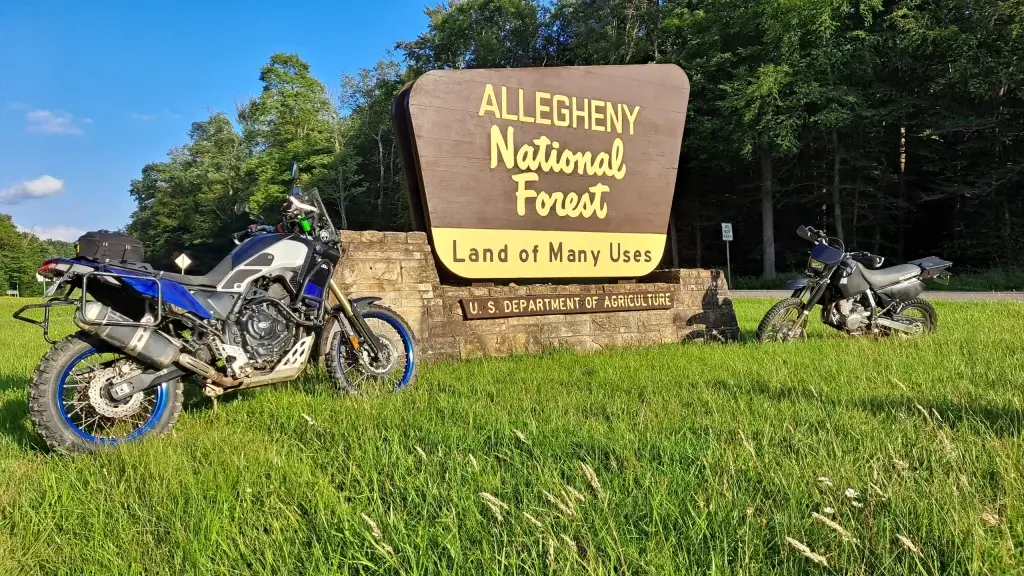
Where to Camp
The Allegheny Discovery Route offers plenty of camping opportunities, both dispersed (free) and developed (fee-based). The key is knowing where to look and following Leave No Trace principles.
🏞️ Dispersed Camping
- Legal in most of George Washington and Monongahela National Forests
- Look for pre-used sites off forest service roads (avoid creating new ones)
- No facilities – pack out everything, including waste
- No campfires during burn bans
🛶 Developed Campgrounds
- Spruce Knob Lake Campground (Monongahela)
- Lake Sherando (GWNF)
- Braley Pond Campground
- Seneca Shadows Campground
Use apps like iOverlander, The Dyrt, or Campendium to locate and review spots. Always check for seasonal closures and fire restrictions before heading out.
Wildlife, Weather & Seasonal Considerations
The Allegheny Mountains offer a rich and biodiverse environment, but it also requires respect and preparation.
🐻 Wildlife Awareness
- Black bears are common – never leave food out
- Rattlesnakes, copperheads, and ticks are possible during summer
- Be cautious with pets; leash laws apply in some zones
🌦️ Seasonal Notes
- Spring (April–May): Wettest season; some roads may wash out. Beautiful wildflowers and fewer bugs.
- Summer (June–August): Hotter days and booming thunderstorms; prepare for humidity.
- Fall (September–October): Best time to overland. Fall foliage peaks late October.
- Winter (November–March): Some forest roads become impassable or gated.
Always check US Forest Service alerts and weather apps like Windy or RadarScope for trail closures and forecasts.
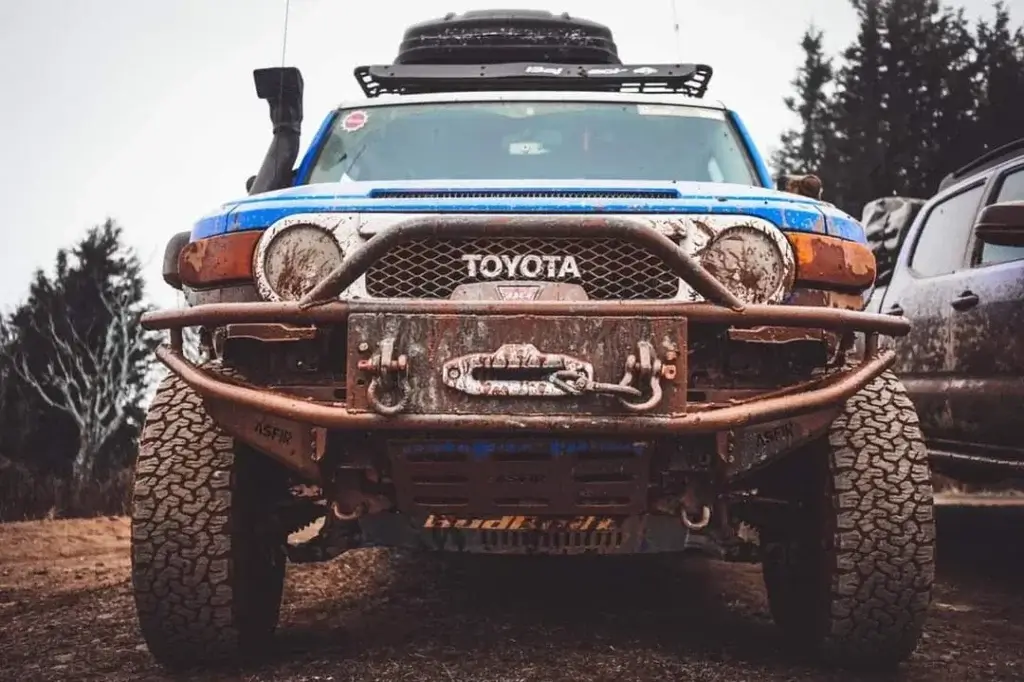
Local Towns for Fuel and Resupply
While overlanding is about getting off the grid, you’ll occasionally need to refuel, restock, or grab a warm meal. These towns are ideal rest stops:
- Harrisonburg, VA: Great starting point. Full of gear stores, groceries, and breweries.
- Franklin, WV: Limited supplies, gas station, and small grocery.
- Durbin, WV: Tiny but quaint. Cass Scenic Railroad nearby.
- Elkins, WV: End-point town with ample services, camp stores, and lodging.
- Staunton, VA: Southern alternate entry or exit point.
Support local businesses when possible — it helps rural communities and builds goodwill for overlanders.
Sample 3-Day Itinerary for the ADR
Day 1: Harrisonburg to Reddish Knob to Braley Pond
- Grab breakfast and supplies in Harrisonburg
- Tackle Union Springs Road and Flagpole Knob
- Enjoy sunset at Reddish Knob
- Camp near Braley Pond (dispersed or developed)
Day 2: Braley Pond to Seneca Rocks to Spruce Knob
- Drive west into West Virginia’s highlands
- Lunch and hike at Seneca Rocks
- Summit Spruce Knob and stay at lake campground
- Stargazing under pristine skies
Day 3: Green Bank to Cass to Durbin or Elkins
- Explore Green Bank’s radio observatory
- Ride the Cass train or photograph the town
- Roll into Elkins for a celebratory meal
Why the ADR Is Perfect for Overlanding
Unlike full-throttle off-road trails or high-traffic camping destinations, the Allegheny Discovery Route strikes the perfect balance:
- Seclusion without severe isolation
- Legal, mapped routes that don’t trespass
- Incredible scenery without extreme difficulty
- Close enough for a weekend, deep enough for a week
With multiple bailout points, towns, and loops, it’s flexible and adaptable to any experience level — whether you’re on your first overland trip or your fiftieth.
Trail Ethics and Leave No Trace
The ADR passes through public lands, fragile ecosystems, and working forest zones. It is absolutely essential to:
- Stay on established trails and roads
- Camp only in legal areas
- Never litter — even biodegradable items
- Avoid loud music, drone use near wildlife, and excessive firewood collection
- Follow posted signage and seasonal closures
By doing so, you preserve the route for future generations and help build a positive reputation for the overlanding community.
Conclusion
The Allegheny Discovery Route is a gift to East Coast overlanders — a thoughtfully routed trail that showcases the best of Virginia and West Virginia’s backcountry. From ridge-line roads to creekside camps, forested hollows to remote observatories, the ADR is more than just a trail. It’s an experience.
So fill your tank, pack your gear, and hit the road. Just make sure to bring a sense of adventure and respect for the land — because that’s what overlanding is all about.
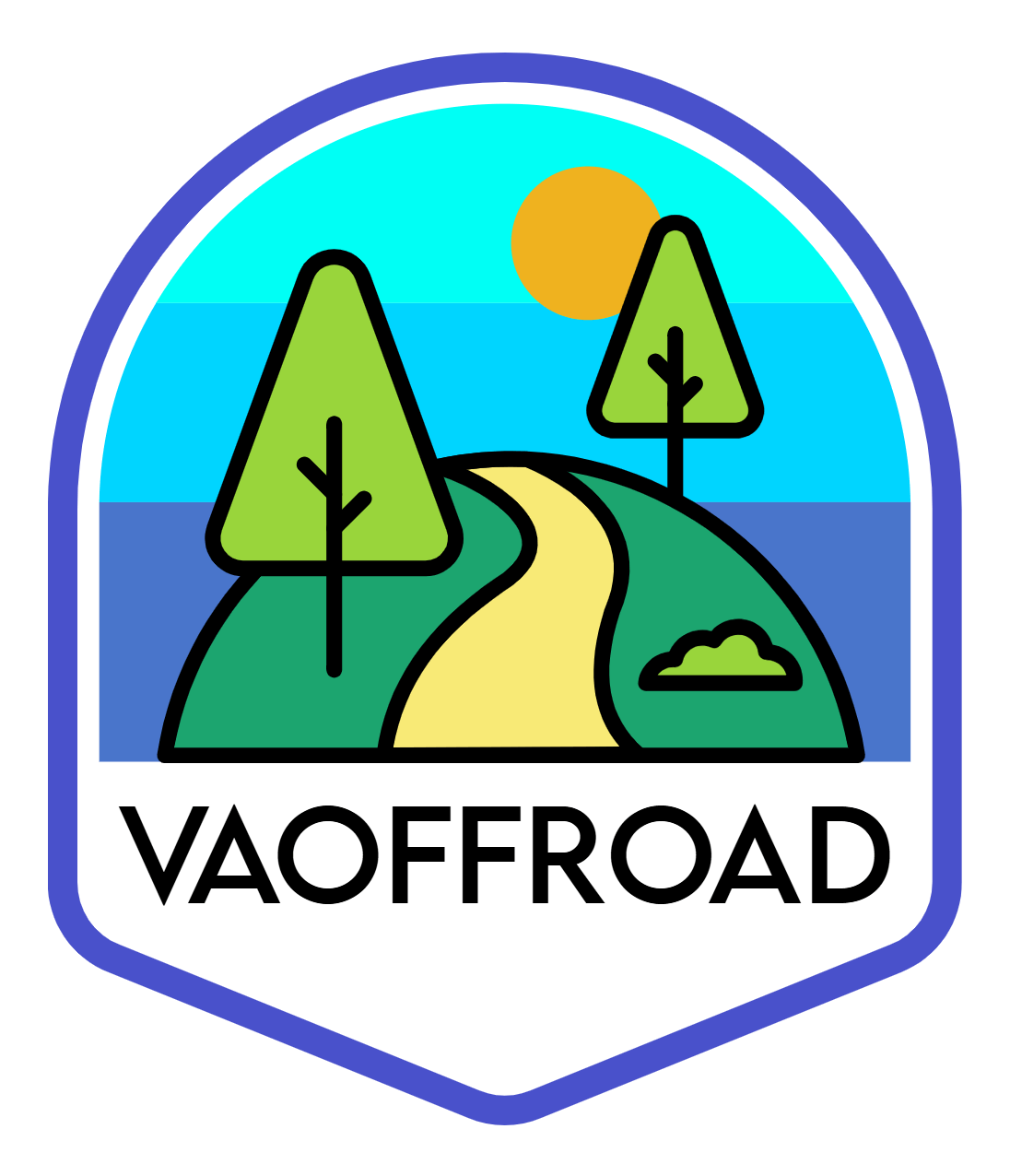
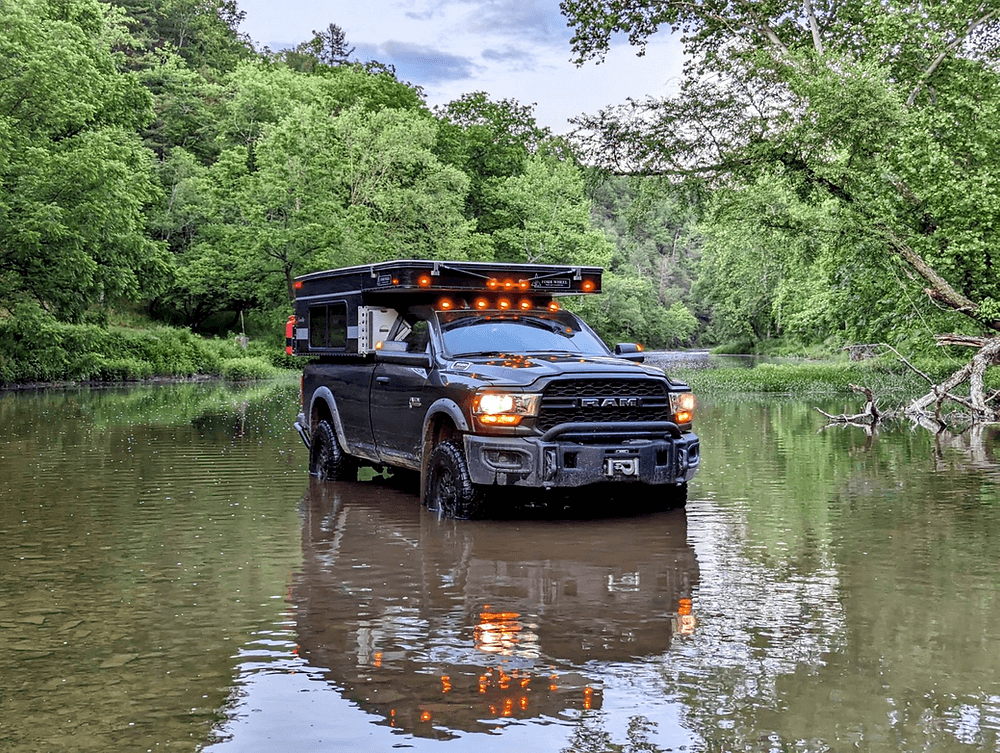

No responses yet